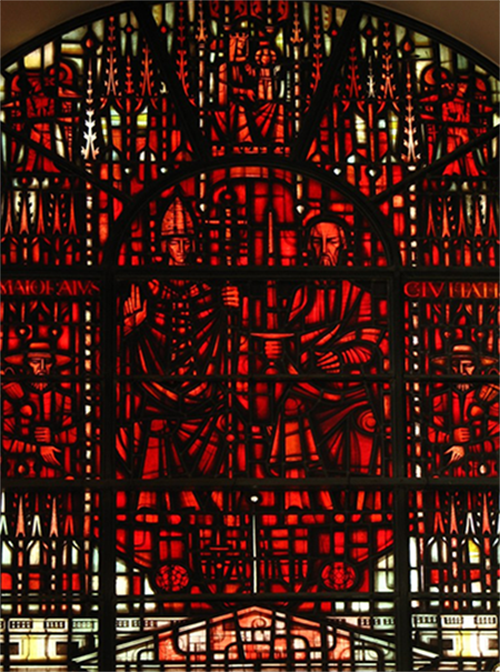Submitted by ARASAllison on

Author’s Preface
Carl Jung's The Black Books (1913–1932) are rich with thousands of images that inspired, affected and took over Jung’s psyche transporting him to a new realm of consciousness. As raw psychic creativity, The Black Books demand a different type of Auseinandersetzung or confrontation than standard text. For me the blood image --and the power of a text written in blood --has a living presence “as a transpersonal wound and womb with well-defined tension of opposites that points beyond itself to the unknown.”i Furthermore,
Contemplating the image with the awareness of opposites that constitute it creates an attitude that opens imagination…We really see the image when we see its essential polarity of which image is the transcendent function as a symbol arising to reconcile the poles.ii
Come with me on the train through Schaffhausen, on the journey that persists through The Black Books, through the horrors of war and violence and the emergence of new life everywhere. If it is shocking, let us be shocked. If it runs off the rails it may bleed onto the page.
In 1913 in Schaffhausen, images of blood, a sea turned to blood, signaled Jung’s entry into what would become his transformation and the birth of analytical psychology. These were horrific images and images that he could not ignore leading to his descent and journey recorded in The Black Books. As a sustained imaginal gaze, this paper traces the blood image throughout The Black Books: how it appears, reflects various contexts in which the image presents itself, how it connects to other images. As we follow the image of blood circulating through the bloodlines of The Black Books, we come to experience being swept into an imaginal journey that loosens the limits of perception and takes us outside of time and boundaries, flowing and changing as if the “I” were recreated in the poiesis. The image spoke through my intuition, sensation, thinking and feeling for the material.
I will begin with a discussion of poiesis and creation moving then to trace the blood image through Jung’s The Black Books. Next, I will amplify the meaning of blood; its biology; historical conception in the quaternity of humours; bloodletting; alchemy; Gnostiscism; vampirisim and blood sorcery before returning in a circulatio to the beginning. Circulating through the text are fantasy, reverie, poetry, projection and inspiration from fields of photography, sculpture, science, art and performance.
The spirit and visceral quality of The Black Books demands more than a traditional left-brain exposition. You will not find that here. This is a difficult and unusual work that contemplates an image and bleeds onto the page emphasizing for us in 2022 that no human hands are clean.
Click here to read Blood and the Liquid “I” Carl Jung's Black Books in its entirety.
__________
i - Notes from Sylvester Wojtkowski, The Origins of C.G. Jung’s Psychology Project: The Black Books, Parts 1 and 2, Seminars, 2021.
ii - Ibid.